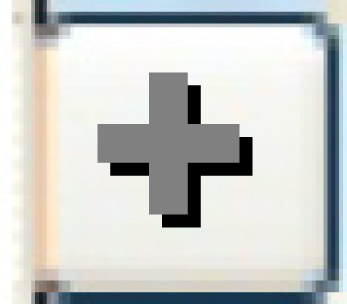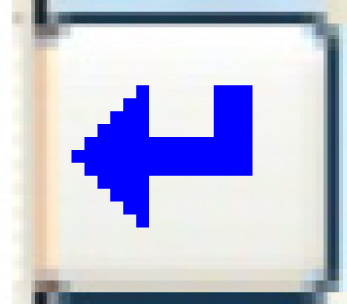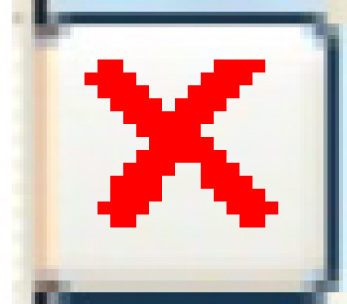- Right-click on the definition and select Copy. The Edit Consolidation List change screen appears for the new definition.
- Click Add
 . The Edit Consolidation
List add screen appears. The top part of the screen
is the billing definition. The bottom part is the billing definition
detail lines.
. The Edit Consolidation
List add screen appears. The top part of the screen
is the billing definition. The bottom part is the billing definition
detail lines. - Type in a description of the new billing definition.
- Fill in the fields as required.
1st Billing Dateidentifies when the first ever consolidated invoice will be produced for this definition. It is required.
Bill Groupis a particular billing group to which this definition applies. You can click on the Prompt
 button to select the billing
group from a list.
button to select the billing
group from a list. Billing Address#is the customer's billing address to be used with this definition. You can click on the Prompt
 button to select the address from a list.
button to select the address from a list. Billing Customeris the customer that will be billed using this definition. You can click on the Prompt
 button to select the customer from a list.
button to select the customer from a list. Charge Typeis a particular type of charge whose invoices will be included. It is optional. You can right-click in the field and select Prompt to select the charge type from a list.
Charge Type Listis a charge type list whose invoices will be included. It is optional. You can right-click in the field and select Prompt to select the charge type list from a list.
Customeris a specific customer whose invoices will be included in this definition. One of customer or customer list is required. You can right-click in the field and select Prompt to select the customer from a list.
Customer Listis a customer list whose invoices will be included in this definition. One of customer or customer list is required. You can right-click in the field and select Prompt to select the customer list from a list.
Detailcontrols printing of the individual invoice line details. When set to Yes, the greatest amount of detail is printed and the invoice may be many pages. When set to No, the individual invoice line details are not printed; summary and total information is still available. You can right-click in the field and select Prompt to select the detail level from a list.
Frequencyidentifies how often the consolidated invoices are produced. You can click on the Prompt
 button to select the frequency
from a list. Valid values are:
button to select the frequency
from a list. Valid values are:
0 - On Demand
1 - Weekly
2 - Monthly
3 - 28 DaysInvoice Datesare start and end dates that determine the Enrich application invoices to be processed. The original invoice date must fall within this range in order for the invoice to be selected for consolidation. The start date is required. If the second date, or termination date, is left blank, all invoices from the start date forward may be selected for consolidation.
Last Billedidentifies when the most recent consolidated invoice was produced with this definition and, along with frequency, controls when the next consolidated invoice will be produced for it.
Lnflags whether totals should be printed for the definition line. This option may be easier to work with on the Change Consolidation Line screen. You can right-click in the field and select Prompt to select the flag from a list.
Override Billing Cutoff Date- if a date is entered here,then this date plus the frequency will be used as the billing cutoff date for the next invoice. The override billing cutoff date will be updated each time a consolidated billing is run, similar to the Last Billed date.
*Note: If this is the first invoice generated for the definition, then the override billing cutoff date will be used exactly as is for the billing cutoff date and not adjusted for frequency. If the override billing cutoff date is left blank, then the billing cutoff date will be defaulted to the last billed date plus the frequency.
The billing cutoff date determines which invoice lines that were already held for consolidation for the definition will be included on the consolidated invoice. Only those invoice lines already held for consolidation that have an invoice date up to or including the cutoff date will be on the consolidated invoice. The billing cutoff date is defaulted to the definition's last billed date plus the billing frequency. This is the legacy functionality prior to the additional override dates being added.
The billing cutoff date can be overridden from both the consolidated definition and the on-demand billing run. This allows you to offset the date that the invoice is generated from the date used to include charges on the invoice. The offset can be either way, with the cutoff date before the last billed date or after the last billed date.
If you are delaying billing to include a late invoice, you may specify the cutoff date on the on-demand billing run rather than letting consolidated billing calculate. In this situation you will most likely want to also specify a frequency and billing customer, since this date will be used for ALL invoices generated by the billing run.
If you routinely want the consolidated invoice to pick up invoice lines that might be billed in advance, you might specify an override billing cutoff date on the consolidated definition. This allows the invoice to be produced in advance of the charges.Override Invoice Date- if a date is entered here, then this date plus the frequency will be used as the invoice date for the next consolidated invoice. The override invoice date will be updated each time a consolidated billing is run, similar to the Last Billed date.
*Note: If this is the first invoice generated for the definition, then the override invoice date will be used exactly as is for the consolidated invoice date, and not adjusted for frequency. If the override invoice date is left blank, then the invoice date will be defaulted to the last billed date plus the frequency.
There may be many different original invoice dates for the charges included on a consolidated invoice. However, the consolidated invoice itself must have an invoice date. The consolidated invoice date defaults to the last billed date plus the frequency. This is the legacy functionality prior to the additional override dates being added.
The consolidated invoice date can be overridden from both the consolidated definition and the on-demand billing run. This allows you to offset the invoice date from the date it was produced. The offset can be either way, with the invoice date before or after the last billed date.
If you routinely want to offset the consolidated invoice date, then specify an override invoice date on the consolidated definition.
If you are doing an on-demand billing run to handle special or unique circumstances, you can specify an invoice date on the On Demand screen and it will override the definition settings and be used for ALL invoices generated by that billing run. In this situation, you will most likely want to also specify a frequency and billing customer since this date will be used for ALL invoices generated by the billing run.Override Printed Bill To Date- if a date is entered here, then this date plus the frequency will be used ass the billing to date on the next invoice. Also, the billing from date will be calculated as the override printed bill to date plus a day. The override printed bill to date will be updated each time a consolidated billing is run, similar to the Last Billed date.
*Note: If this is the first invoice generated for the definition, then the override printed bill to date will be used exactly as is for the billing to date, and not adjusted for frequency. The billing from date will be set to the start of the Invoice Date range on the CB definition.
If the override printed bill to date is left blank on the consolidated definition, then the default values (from cutoff dates) will be used. The billing from date will be set to the cutoff date from the previous consolidated bill for the definition plus a day.
The printed bill to date is the date printed on the Premium Forms consolidated invoice as the billing to date. The customer will see this date as the ending date for the billing period. This date does not affect the actual charges included on the invoice; it is strictly for presenting information on billing period to the customer. The default value is set from the billing cutoff date and the billing from date is calculated from the previous consolidated invoice cutoff date plus a day. This is considered the legacy functionality and is how Enrich functioned prior to having an override bill to date on the CB definition or on-demand billing run.
The printed bill to date can be overridden from both the consolidated definition and the on-demand billing run. Use the override on the definition when you want to regularly offset the printed bill to date from the actual cutoff date used to select charges included on the invoice.
Example: The cutoff date is the 5th since it takes a couple of days to get the charges in the system and processed, but in reality the charges only apply to the 31st of the previous month. You want the invoice billing period to show the 31st. Set the definition dates as:
Last Billed: 2008/02/05 (used for the cutoff date)
Override Printed BILL TO date: 2008/01/31
Use the override on the on-demand billing run when you want to set a custom billing to date for one particular billing run. Be careful, as this override date will be used on ALL invoices generated by the billing run.Print Seqis a sequential number that determines the order in which the matching charges will print. The lowest print sequence will print first on the consolidated invoice.
Print Supporting Documentsidentifies whether or not supporting documents (i.e. copies of the original invoices) should be printed at the same time that the consolidated bill is printed.
Print Totals- these 5 fields flag whether or not totals should be printed for each of the sort levels. These options may be easier to work with on the Change Consolidation Line screen. You can right-click in the fields and select Prompt to select the flags from a list.
Separate Invoicesidentifies whether and how to separate invoices when this definition is used.
Sort Orderis up to 5 sorting levels, which determine the print sequence. If you blank out a sort order field, it will default to 9 - N/A, and the print total and print header options for that sort level will default to No. These options may be easier to work with on the Change Consolidation Line screen. You can right-click in the fields and select Prompt to select the sort items from a list. First level sort can be by:
- C - customer
- D - date
- E - equipment type
- H - equipment group
- P - equipment pool
- R - repair reason
- S - customer suffix
- T - type
- U - unit
- W - document # (e.g. work order #)
In addition to the above sorts, second to fifth level sorts can be identified as 9 - N/A.Unitis a specific equipment unit whose invoices will be included. It is optional. You can right-click in the field and select Prompt to select the unit from a list.
Unit Listis an equipment list whose invoices will be included. It is optional. You can right-click in the field and select Prompt to select the equipment list from a list.
- Click Enter
 to save the definition.
to save the definition.
- Right-click on the definition and select Activate. The status of the definition changes to A and it becomes available for use.
- Right-click on the definition and select Inactivate. If unbilled charges exist for the definition, the Warning Unbilled Charges Exist screen appears.
- Click Cancel
 to cancel the inactivation.
OR
to cancel the inactivation.
OR - Click Enter
 to inactivate the definition
anyway. The status of the definition changes to I, and it
will not be available for use.
to inactivate the definition
anyway. The status of the definition changes to I, and it
will not be available for use.